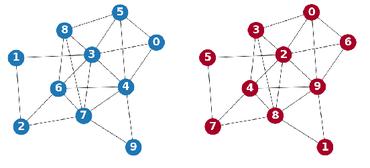MATA*: Combining Learnable Node Matching with A* Algorithm for Approximate Graph Edit Distance Computation
Graph Edit Distance (GED) is a general and domain-agnostic metric to measure graph similarity, widely used in graph search or retrieving tasks. However, the exact GED computation is known to be NP-complete. For instance, the widely used A* algorithms explore the entire search space to find the optimal solution which inevitably suffers scalability issues. Learning-based methods apply graph representation techniques to learn the GED by formulating a regression task, which can not recover the edit path and lead to inaccurate GED approximation (i.e., the predicted GED is smaller than the exact). To this end, in this work, we present a data-driven hybrid approach MATA* for approximate GED computation based on Graph Neural Networks (GNNs) and A* algorithms, which models from the perspective of learning to match nodes instead of directly regressing GED. Specifically, aware of the structure-dominant operations (i.e.,node and edge insertion/deletion) property in GED computation, a structure-enhanced GNN is firstly designed to jointly learn local and high-order structural information for node embeddings for node matchings. Second, top-k candidate nodes are produced via a differentiable top-k operation to enable the training for node matchings, which is adhering to another property of GED, i.e., multiple optimal node matchings. Third, benefiting from the candidate nodes, MATA* only performs on the promising search directions, reaching the solution efficiently. Finally, extensive experiments show the superiority of MATA* as it significantly outperforms the combinatorial search-based, learning-based and hybrid methods and scales well to large-size graphs.
PDF Abstract
